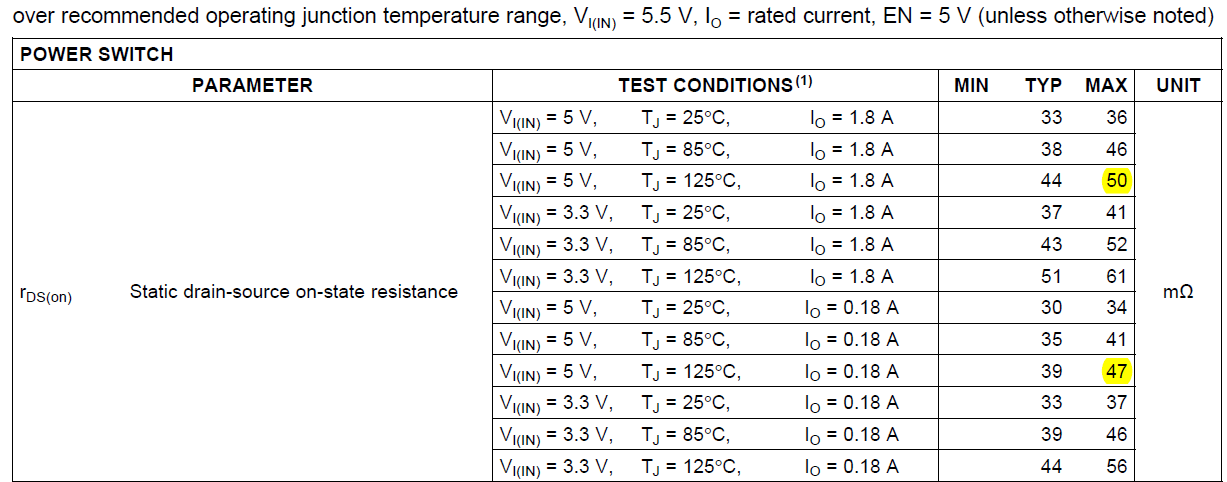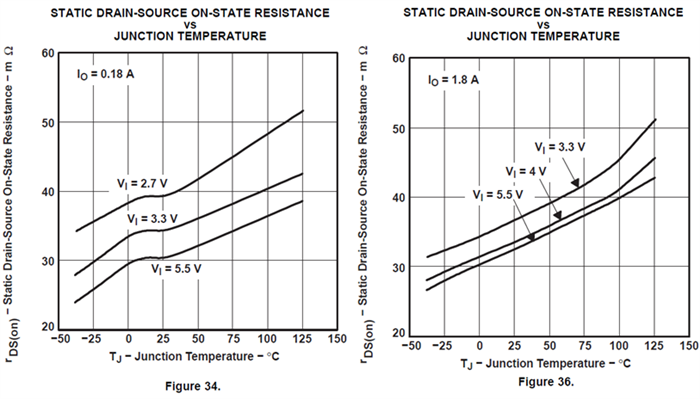Other Parts Discussed in Thread: TPS2001C
Hi Team,
We understand that there is "rDS(ON) at Iout=1.8A" in the datasheet.
However, our customer would like to know the min and max value of “rDS(ON) at VIN=5V, Tj=-40℃ to 125℃, Iout=2.0A”.
Could you please let us know if you have any data?
Regards,
Kanemaru



